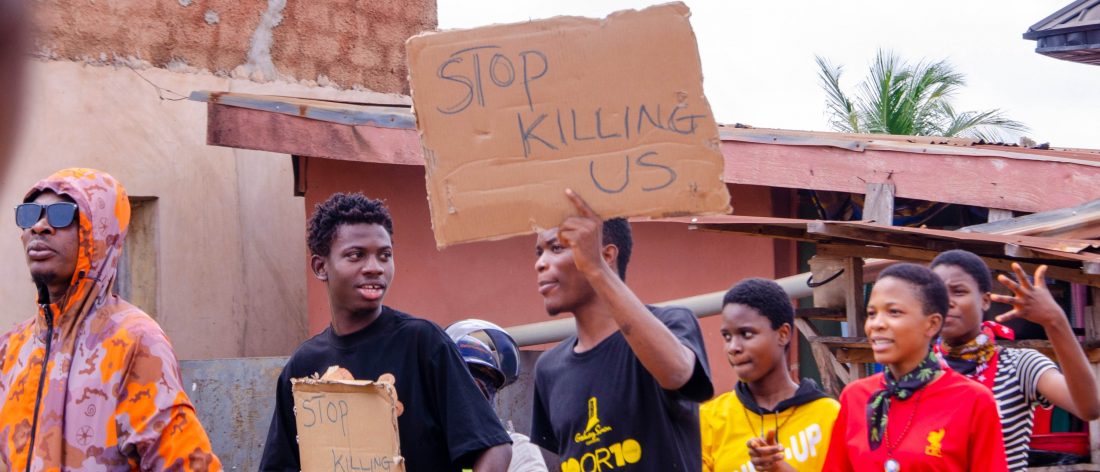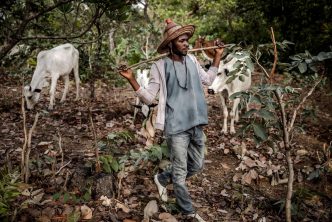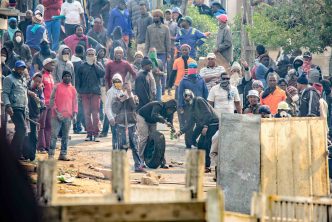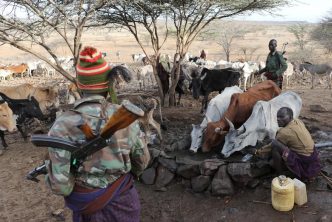Walking on the path of sustainable unity
By Dr. Ben Nwosu
The use of force in addressing secession and restive issues has not yielded any significant result; this calls for exploring non-violent strategies in curbing this menace.
Introduction
The friction between Biafran agitators and Nigerian security agencies boiled over on August 23, 2020, at Enugu state, which led to the loss of two security operatives and twenty-one members of the Indigenous People Of Biafra (IPOB). This number adds to the loss of lives in previous episodes of the encounter between different Biafran agitators and state authorities. In May 2008, other pro-Biafran agitators, Movement for the Actualization of the Sovereign State of Biafra (MASSOB), alleged that the Federal Government had killed 2,020 of its members. Amnesty International also reports that between 2015 and 2016, security forces killed 150 pro-Biafran protesters across Southeastern Nigeria. In addition to the hard-nosed use of force on the groups, the government also declared IPOB, which is presently the most vocal among the pro-Biafran groups, a terrorist organization in September 2017. However, the pro-Biafran sentiments and activities remain undiminished even if suppressed. The most recent clash between the IPOB and a combined team of security agencies in Enugu state calls for a different approach to engage and defuse. This policy remains the best strategy for addressing secession and restiveness issues. Thus, this week’s edition of Nextier SPD Policy Weekly deepens discussion on the need for a change from the use of force to communicative engagement in responding to secessionist movements.
The Basis of Secessionist Renewal
Systematic marginalization claims mainly drive the agitations for a separate republic. Like the Biafran secession campaign in Southeast Nigeria, the Ambazonian secession struggle in Anglophone Southwest and Northwest Cameroon. Common arguments suggest high unemployment, low infrastructural development, limited opening for political representation and appointments into important decision-making offices, and general inequity in other aspects of value allocation. Although these problems exist across both countries, some part of these countries feels worse off. In Nigeria’s case, the southeast region at the centre of the agitation claims that the Federal Government has been consciously marginalizing them since the end of the Biafran war in 1970. In Cameroon’s case, the secession agitations are hinged on the unbalanced federal arrangement with limited local autonomy and governance.
The two states’ reaction to these purported deliberate neglects is what ignites the mostly young agitators. These positions create tensions due to clampdown by security agencies. The government’s response with force and insubordination of the agitators renders the secessionist movements an additional source of the several conflicts that confront the countries. This challenge goes side by side with a long battle with the terrorist Boko Haram, banditry, and other forms of state and non-state violence.
The Cost of Excessive Force and Rationale for an Alternative
Nigeria’s excessive emphasis on kinetic approach in dealing with insecurity sources has significant implications for the economy and the security forces. For instance, the cost of fighting Boko Haram was in 2018 estimated to be around USD 9 billion. The farmer-herder conflict continues at the cost of human lives, properties, a decline in agricultural productivity, and increased human resources need on the security agencies for maintaining order in the zones of agrarian conflicts. A study by Mercy Corps claims that North Central Nigeria’s conflicts (Middle Belt) lead to an estimated 47 percent less in taxes. Similarly, the armed forces are over-stretched with limited capacity to engage with the Boko Haram terror in the North East. The situation also affects the police force and other security agencies.
Regarding the security forces, the military lacks an adequate workforce and funding to prosecute anti-terrorism war. The Nigerian Police also suffer similar staffing and funding constraints. Besides, if the conflict escalates, the already over-stretched security forces would face the further burden of responding to a conflict situation that demands more resources and workforce than it can afford. If anything, the continued use of force may create a sense of martyrdom on the agitators and lead to radicalization.
More fundamentally, the non-kinetic conflict responses have yielded far better results in achieving and stabilizing peace than the use of force. For instance, the Presidential Amnesty Programme was based on non-combat engagement with the militant youths of the Niger Delta region. This approach has restored peace and ended attacks on petro-business. Again, a non-kinetic method based on De-radicalization, Rehabilitation, and Reintegration (DRR) has, after six months, reintegrated 601 ex-Boko Haram militants. This process is based on the principle that encouraging the fighters to repent is likely to lead to more sustainable peace. Thus, it is only correct to say that a related approach to the persisting agitation for secession by pro-Biafran agitators is the more sustainable pathway to peace.
For example, in pursuance of negotiation and peace, the Cameroonian government and leaders of the separatist group in Cameroon held talks in July 2020. This meeting was their first since 2017 that violence broke out, with more than 3,000 persons killed and thousands turned into refugees.
What is to be done
Transcending the force approach warrants communicative engagement with the actors, and this process would necessarily require:
- The deployment of a conflict expert group to mediate the process of communicative engagement. This process would warrant interfacing with the government and the secessionist groups. According to Ann Miche, Associate professor of sociology and peace studies at the Kroc Institute for International Peace Studies at the University of Notre Dame, USA, such clashes between the state and movements could be turned into productive action towards justice by using “insider-outsider” strategies. The government needs to work with experts to understand the rising grassroots mobilization, institutional activism, and resolving the collective grievance.
- Building on the deployment of the experts, there should be a pact with mutually agreed points of understanding with a clear commitment from both the government and the groups to respect the agreement for stopping secessionist agitations from the groups or their possible future splinter groups;
- Promotion of unity through equitable distribution of opportunities in infrastructural development, employment opportunities for the youth, and appointment of qualified persons from the region into important policy-making positions.
Conclusion
The persisting separatist agitations in Southeast Nigeria and Southwest/Northwest Cameroon despite clampdowns by these countries’ governments for some years suggests that the current approach is irrelevant to addressing the problem. The government achieved more sustainable peace in places where it deployed the non-force strategy. This outcome makes the communicative engagement approach a better option in responding to Biafran and Ambazonian separatist groups’ agitations. Their involvement is the approach that would address their fundamental grievances and commit faithful citizenship from the agitators.
Dr. Ben Nwosu is a Senior Lecturer in the Department of Political Science, University of Nigeria, Nsukka, and a Senior Research Fellow in the Institute of Development Studies, University of Nigeria Enugu campus.







